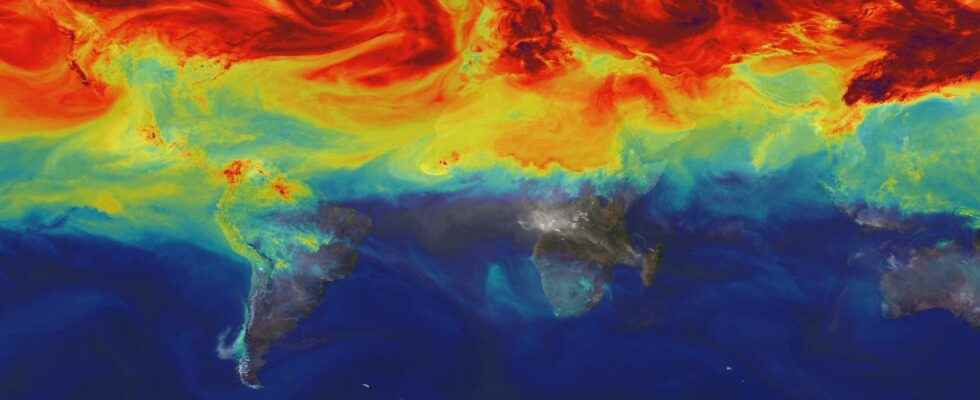A new globe animation shows plants around the world absorbing and releasing carbon over the seasons, making the continents look like living lungs.
You will also be interested
[EN VIDÉO] Greenhouse gases: a new record in 2020 and after? According to the World Meteorological Organization (WMO), in 2020 the levels of greenhouse gases in our atmosphere reached a new record high. The annual rate of increase was higher than the average for the period 2011-2020. And the trend looks set to continue into 2021, continuing to fuel global warming that is causing more and more extreme weather events and other serious consequences for life on our Earth. To avoid the worst, we must now set carbon neutrality objectives. And hold them! © WMO
the carbon dioxide (CO2) is one of the main greenhouse gases that contributes to global warming. It is found naturally on Earth and helps to control the temperature of the Planet by trapping the rays of the Sun in L’atmosphere. Without him, the Earth would be permanently plunged into freezing cold. However, human activities have disrupted this natural balance by causing the amount of carbon dioxide to explode. carbon released into the atmosphere, contributing significantly to the rise in the Earth’s global temperature. 70% of emissions of greenhouse gas are currently carbon dioxide.
Carbon dioxide, or carbon dioxide, is a gas that plants “inhale” : they absorb carbon in the atmosphere and use it as fuel to grow, 40% of this carbon is sent to the roots and is used to feed the microorganisms of the ground. These micro-organisms then transform the carbon into what is called a “carbon glue” and this plays a role in the circulation ofair and water in the ground. The soil therefore traps carbon dioxide, it is ” carbon sequestration “.
The Earth breathes differently between summer and winter
L’animation by Markus Reichstein, director of theGerman Max Planck Institute for Biogeochemistry, was carried out using satellite data and hundreds of carbon detection stations on Earth: the continents indeed seem to successively swell, then deflate, throughout the year. The oceans are also an important carbon sinkbut they don’t appear on the animation because they don’t show a noticeable difference over the seasons.
The land seems to deflate during the summer, the time of year when vegetation grows and plants absorb carbon dioxide from the atmosphere. On the other hand, the land seems to swell during thewinter, indicating that the vegetation enters a quiescent phase, or dies, and the carbon then escapes into the atmosphere. The difference is particularly marked in latitudes temperate climates, in continental Europe (France, Spain, Italy, Germany, etc.) and in North America, areas where changes in weather between summer and winter are very marked. The equatorial zones (South America and Indonesia) do not show such a great evolution because the climate there is more stable throughout the year). Likewise for desert areas which do not sequester as much carbon due to very limited vegetation.
Europe, a neglected lung of the Earth
The interest of the animation is to show the importance of plants, and their conservation, in the fight against climate change. Moreover, the animation highlights light areas of capital importance and too often deteriorated: while the Amazonian forest is often presented as the lung of the Planet, the natural spaces of Europe, which nevertheless appear as another essential lung, do not attract as much attention . What’s more, the Amazon rainforest now releases more carbon into the atmosphere than it absorbsbecause of deforestation and fires.
The director of the Institute specifies that climate change is also changing the distribution of plants throughout the world, sometimes in a surprising way: the longer and hotter summers ofnorthern hemisphere allow plants to have more time to grow. But if this lengthening of summer conditions is accompanied by droughtand not of precipitation regularly, then there is no benefit for the plants and therefore for carbon sequestration.
Interested in what you just read?
